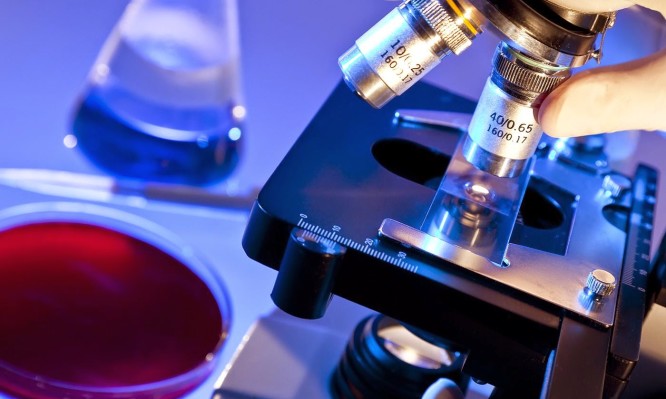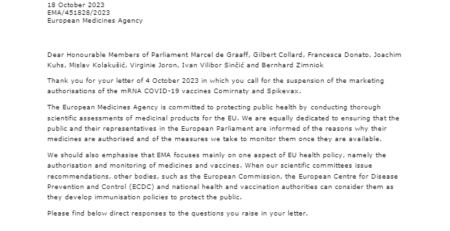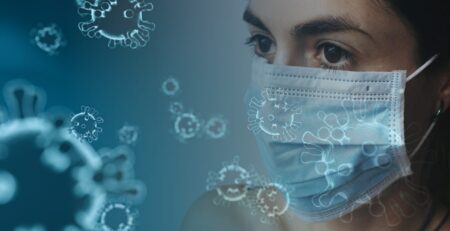Αποτελεσματικότητα της παραδοσιακής κινεζικής ιατρικής στο COVID-19
Η Κίνα προωθεί εναλλακτικές θεραπείες για την καταπολέμηση του κορονοϊού
Από την αρχή της επιδημίας του κορονοϊού η Κίνα αναζήτησε θεραπευτικές λύσεις, εκτός από τη σύγχρονη, και στην παραδοσιακή ιατρική, στην οποία η χώρα έχει μία μακραίωνη παράδοση. Όσο ο καιρός περνάει, παράλληλα με την ανάπτυξη εμβολίων και αντι-ιικών φαρμάκων, για τα οποία γίνονται εργώδεις προσπάθειες, η κινεζική κυβέρνηση προωθεί συστηματικά παραδοσιακά βότανα και άλλες εναλλακτικές θεραπείες για τη νόσο Covid-19.
Μάλιστα, οι εν λόγω παραδοσιακές θεραπείες έχουν αρχίσει να εξάγονται ως διεθνής βοήθεια σε χώρες όπως η Ιταλία και το Ιράν, που επλήγησαν σοβαρά από την πανδημία. Οι επιστήμονες άλλων χωρών, σύμφωνα με το «Nature», εμφανίζονται επιφυλακτικοί, αν όχι ανήσυχοι, θεωρώντας ότι είναι επικίνδυνη η υποστήριξη θεραπειών που ακόμη δεν έχουν αποδειχθεί μέσω της συνήθους οδού των κλινικών μελετών ότι είναι ασφαλείς και αποτελεσματικές.
Η Κινεζική Παραδοσιακή Ιατρική (ΚΠΙ) βασίζεται στη θεωρία του «τσι», της ζωτικής ενέργειας που βοηθά στην ισορροπία και υγεία του σώματος. Το «βάλτωμα» του τσι θεωρείται ότι μπορεί να αποβεί παθογόνο. Ο Παγκόσμιος Οργανισμός Υγείας (ΠΟΥ) αρχικά αποθάρρυνε τη χρήση παραδοσιακών φαρμάκων κατά της Covid-19 και τα εν λόγω φάρμακα, κατά τους πρώτους μήνες της πανδημίας, αναφέρονταν στην ιστοσελίδα του ως «μη αποτελεσματικά κατά της Covid-19 και πιθανώς επιβλαβή». Όμως, στη συνέχεια ο ΠΟΥ αναθεώρησε τη στάση του και η εν λόγω δημόσια προειδοποίηση αποσύρθηκε.
Εκπρόσωπος του ΠΟΥ διευκρίνισε ότι η αρχική δήλωση «ήταν υπερβολικά ευρεία και δεν ελάμβανε υπόψη το γεγονός ότι πολλοί άνθρωποι στρέφονται σε παραδοσιακά φάρμακα για να ανακουφίσουν ορισμένα από τα ηπιότερα συμπτώματα της Covid-19». Η γενική θέση του ΠΟΥ είναι ότι μέχρι στιγμής δεν υπάρχει καμία απόδειξη πως οποιοδήποτε φάρμακο -παραδοσιακό ή άλλο- είναι σε θέση να προλάβει ή να θεραπεύσει την πανδημική νόσο (μόνο η ρεμδεσιβίρη έχει φανεί σε μερικές κλινικές μελέτες να επιταχύνει την ανάρρωση των ασθενών). Επίσης, ο ΠΟΥ τονίζει ότι δεν συνιστά στους ανθρώπους να παίρνουν μόνοι τους τα οποιαδήποτε φάρμακα, χωρίς ιατρική καθοδήγηση, ελπίζοντας έτσι να προλάβουν τη μόλυνση ή να θεραπευθούν από αυτήν.
Στην Κίνα, τόσο οι δημόσιες Αρχές όσο και τα κρατικά μέσα ενημέρωσης, προωθούν διάφορα σκευάσματα της Κινεζικής Παραδοσιακής Ιατρικής (ΚΠΙ), όπως είναι η επίσημη και διεθνώς αναγνωρισμένη ονομασία της, τα οποία προβάλλονται ότι μειώνουν τα συμπτώματα της Covid-19 και τους θανάτους. Όμως, αυτοί οι ισχυρισμοί, στις περισσότερες περιπτώσεις, τουλάχιστον έως τώρα, δεν υποστηρίζονται από αξιόπιστες κλινικές μελέτες.
Η αποτελεσματικότητα ορισμένων ουσιών της ΚΠΙ, όντως, δοκιμάζεται στην Κίνα, αλλά ορισμένοι δυτικοί επιστήμονες εκφράζουν αμφιβολίες για τον σωστό σχεδιασμό των μελετών και κατά πόσο θα παράγουν αξιόπιστα αποτελέσματα. Από την άλλη, οι Κινέζοι -οι Αρχές (μεταξύ των οποίων το υπουργείο Υγείας) και πολίτες- έχουν πολύ μεγαλύτερη εμπιστοσύνη στην ΚΠΙ, καθώς χρησιμοποιούν τέτοια παραδοσιακά φάρμακα εδώ και χιλιάδες χρόνια.
Βέβαια, αυτό δεν σημαίνει ότι τα παραδοσιακά φάρμακα δεν μπορεί να έχουν σοβαρές παρενέργειες ή το όφελός τους στην περίπτωση του κορωνοϊού να είναι μικρό έως μηδαμινό. Από την άλλη πλευρά, όμως, ο εύλογος αντίλογος είναι ότι κάτι ανάλογο μπορεί να συμβεί, επίσης, με πιο συμβατικά φάρμακα, όπως π.χ. η υδροξυχλωροκίνη, που δοκιμάζεται ήδη σε νοσοκομεία κατά της σοβαρής Covid-19 και η οποία έχει σημαντικές παρενέργειες σε ορισμένους ασθενείς.
Αν, όμως, στη Δύση γίνεται ανοικτή κριτική στις υπό δοκιμή θεραπείες, στην Κίνα δεν συμβαίνει το ίδιο, καθώς η ΚΠΙ είναι μία βιομηχανία με τζίρο δισεκατομμυρίων ευρώ κάθε χρόνο, η οποία λαμβάνει επιθετική κρατική υποστήριξη, ώστε να εξάγεται και σε άλλες χώρες. Στο τέλος Απριλίου ένας γιατρός κινεζικού νοσοκομείου της επαρχίας Χουμπέι τιμωρήθηκε και υποβιβάστηκε, χάνοντας τα διοικητικά καθήκοντά του, επειδή έκανε διαδικτυακή ανάρτηση ότι οι συστάσεις της Κίνας για θεραπείες της Covid-19, ιδίως οι σχετικές με την παραδοσιακή κινεζική ιατρική, δεν βασίζονται σε επιστημονικά δεδομένα.

Η Κρατική Υπηρεσία Κινεζικής Παραδοσιακής Ιατρικής έχει ανακοινώσει ότι τρεις «φόρμουλες» (κοκτέιλ ουσιών) και τρία φάρμακα «έχουν αποδειχθεί» αποτελεσματικά κατά της Covid-19. Επιστήμονες της Ακαδημίας Κινεζικών Ιατρικών Επιστημών έχουν συμμετάσχει σε κλινικές δοκιμές φαρμάκων ΚΠΙ και έχουν δηλώσει ότι έχουν επιβεβαιώσει την ασφάλεια και αποτελεσματικότητα ορισμένων από αυτά. Σύμφωνα με τις περιγραφές στην επίσημη κινεζική ιστοσελίδα των κλινικών δοκιμών, κάποιο φάρμακο μειώνει τα συμπτώματα της Covid-19, ένα άλλο αποτρέπει τα ήπια συμπτώματα να γίνουν σοβαρά και ένα τρίτο μειώνει τον χρόνο ανάρρωσης. Σύντομα, αναμένεται η αναλυτική δημοσίευση των σχετικών αποτελεσμάτων των δοκιμών.
«Έως ότου υπάρξουν χειροπιαστές αποδείξεις, είναι ανήθικο να προωθούνται στην αγορά μέθοδοι ΚΠΙ με τον ισχυρισμό ότι είναι αποτελεσματικές», δήλωσε ο κυτταρικός βιολόγος Νταν Λαρχάμαρ του σουηδικού Πανεπιστημίου της Ουψάλα. «Οι άνθρωποι νομίζουν ότι το να κάνουν κάτι είναι καλύτερο από το τίποτα. Η ιστορία, όμως, μας λέει ότι αυτό δεν είναι αλήθεια», σχολίασε ο λοιμωξιολόγος Πολ Όφιτ του αμερικανικού Νοσοκομείου Παίδων της Φιλαδέλφεια.
Abstract
Severe acute respiratory syndrome coronavirus 2-infected pneumonia (novel coronavirus-infected pneumonia [NCIP]) is a new viral illness initially identified in the central Chinese city of Wuhan in December 2019. According to the daily report on the epidemic situation of coronavirus disease (COVID-19) issued by the National Health and Family Planning Commission of the People’s Republic of China on March 23, 2020: COVID-19 is highly infectious, causing extremely high incidence of NCIP throughout Wuhan and has spread swiftly to 34 provinces within China and >100 other countries around the world between January and March 2020. Up to August 11, 2020, there have been 89,383 cases diagnosed as coronavirus-infected pneumonia; and 4,696 deaths in China (mortality rate of 5.25%) and worldwide reports have confirmed 19,936,210 cases and 732,499 deaths. These figures have been increasing daily. The treatment of viral conditions is well established within the context of Chinese Medicine. We report 2 successful cases in this study showing the patient’s chest computed tomography scans and temperature charts made on before, during, and after treatment to demonstrate proof of the positive benefits achieved. Traditional Chinese Medicine (TCM) demonstrates a positive effect in the treatment for COVID-19. It is highly recommended that TCM be incorporated early on in the treatment schedule for COVID-19.
Background
Novel coronavirus-infected pneumonia (NCIP) is a new viral illness initially identified in the central Chinese city of Wuhan in December 2019. According to the daily report on the epidemic situation of coronavirus disease (COVID-19) issued by the National Health and Family Planning Commission of the People’s Republic of China on March 23, 2020: COVID-19 is highly infectious, causing extremely high incidence of NCIP throughout Wuhan and has spread swiftly to 34 provinces within China and >100 countries worldwide. There have been 89,383 cases diagnosed as coronavirus pneumonia and 4,696 deaths in China (mortality rate of 5.25%) until global reports up to August 11, 2020 issued by WHO, which have indicated near to 20 million (19,936,210) cases and 732,499 deaths in the world.1 These figures have been increasing daily. In February 2020 the epidemic and clinical analyses to NCIP was published by the Chinese Centre for Disease Control and prevention in the New England Journal of Medicine2 and in JAMA by the medical teams in Wuhan.3 As NCIP is a novel viral disease, there is no successful treatment model in conventional modern medicine.
Since January 2020, our team has been applying the strategies of Traditional Chinese Medicine (TCM) to the treatment plans for patients with NCIP. Records evidence that the morbidity and mortality rates for severe acute respiratory syndrome decreased after the successful introduction of TCM herbal medicine during its outbreak in 2003.4–6 Our previous successful experience and understanding in treating viral illness with TCM confirmed our belief to apply this modality to gain positive results. We report 2 successful cases in this study.
CASE 1
Female, 38 years old, resident of Wuhan, presented with fever, rigors, dry cough and dry mouth without sputum, dizziness, aching limbs, depressive mood, and anorexia. She had been self-medicating (drug unknown) for 3 days before presentation but had felt no improvement. Chest computed tomography (CT) scan showed multiple ground glas’ appearance in both lungs. She was diagnosed with pneumonia and admitted to hospital. During her stay on a general medical ward, she was prescribed the antibiotic ceftazidime and a patent Chinese herb infusion (Xiyan Ping—Lipid Sulfonation of Herba Andrographitis/Chuanxinlian) for 4 days but showed no significant improvement. A reverse transcription polymerase chain reaction (RT-PCR) diagnosis of coronavirus-infected pneumonia was subsequently made.
The patient was then transferred to our department with a fever of 39.2°C, slight aversion to cold, bitter taste and dry mouth, dry cough without sputum, dizziness, aching limbs, and anorexia. She had a red tongue with a thin-yellow–greasy coating. Chest CT is displayed in Figure 1.

After admission, in addition to ceftazidime and Xiyan Ping, she was given an herbal formula targeted to her aforementioned symptoms.
TCM diagnosis: Combined pattern of larger yang meridian and lesser yang meridian.
Herbal prescription: Modified Xiao Chai Hu Tang (Minor Bupleurum Decoction) and Ma Xing Shi Gan Tang (Ephedra, Apricot Kernel, Gypsum, and Licorice Decoction)
Prescription
Chai Hu (Bupleuri Radix) 20 g
Huang Qin (Scutellariae Radix) 12 g
Fa Ban Xia (Pinelliae Rhizoma preparatum) 12 g
Dang Shen (Codonopsis Radix) 15 g
Gan Jiang (Zingiberis Rhizoma) 10 g
Da Zao (Jujubae Fructus) 12 g
Zhi Gan Cao (Glycyrrhizae Radix preparata) 10 g
Ma Huang (Ephedrae Herba) 10 g
Xing Ren (Armeniacae Semen) 12 g
Shi Gao (Gypsum fibrosum) 30 g
Lu Gen (Phragmitis Rhizoma) 30 g
Zi Wan (Asteris Radix) 15 g
Kuan Dong Hua (Farfarae Flos) (Flos Farfarae) 15 g
Chan Tui (Cicadae Periostracum) 10 g
Yi Yi Ren (Coicis Semen) 20 g
Mai Ya (Hordei Fructus germinatus) 20 g
The aforementioned herbal mixture was decocted and taken orally twice daily.
After 1 dose of the herbs the patient’s sweating and temperature decreased; she reported resolution of most of her symptoms after 3 doses and her RT-PCR test became negative. Her temperature changes are displayed in Figures 2 and 3.


The TCM prescription was not altered any further as the patient improved. After completing her course, 7 days of herbs, repeat RT-PCR testing was negative for COVID-19. A repeat CT scan showed reduction but not complete disappearance of the typical ground glass appearance, and so herbs were continued for a further 5 days. The patient improved daily without recurrence of symptoms (Fig. 4).

Result
A third CT scan showed almost complete disappearance of the ground glass appearance (Fig. 5). On discharge the patient had complete resolution of symptoms.

CASE 2
Male, 60 years old, resident of Wuhan, presented to the district hospital with fever and rigors, dry cough, aching muscles, breathlessness, fatigue, bloating, and anorexia since January 17, 2020. His CT scan (hereunder) showed an infective appearance in both lungs, and a diagnosis of viral pneumonia was suspected. He received unknown outpatient treatment.
The patient did not improve after initial treatment. He was admitted on January 24, 2020 to a general ward and prescribed ceftazidime, moxifloxacin, oseltamivir, anti-influenza patent herbs (Lianhua Qingwen capsules and Xiyanping infusion), and Ibuprofen as a baseline treatment. Owing to ongoing fever >40°C and positive RT-PCR testing, he was admitted to the special COVID-19 ward.
On admission to our unit, he appeared in poor spirits with intermittent fevers in the afternoons reaching 40°C with headache, general muscular aching, dry cough, breathlessness and fatigue, activity-induced wheezing, bloating, and anorexia. His tongue was red with a yellow-thick-greasy coating.
TCM diagnosis: Dampness and heat accumulation
Treatment principles: Resolve dampness and clear accumulated heat
Herbal prescription: Modified San Ren Tang (3-Seed Decoction)
Xing Ren (Armeniacae Semen) (Semen Armeniacae) 10
Baidoukou (Amomi Cardamomi Fructus) 10
Yi Yi Ren (Coicis Semen) 30
Hou Po (Magnoliae officinalis Cortex 10
Fa Ban Xia (Pinelliae Rhizoma preparatum) 10
Tong Cao (Tetrapanacis Medulla) 10
Gan Cao (Glycyrrhizae Radix) 10
Hua Shi (Talcum) 10
Zhi Mu (Anemarrhenae Rhizoma) 10
Huang Qin (Scutellariae Radix) 10
Ma Huang (Ephedrae Herba) 8 g
Fu Ling (Poria) 10 g
Chai Hu (Bupleuri Radix) 10 g
Dan Zhu Ye (Folium Bambusae) 10 g
The aforementioned herbal mixture was decocted and taken orally twice daily for 5 days.
Result
The patient’s fever and sweats decreased after 1 dose of the aforementioned herbs. All symptoms reduced after 3 doses. His temperature is seen in the charts in Figures 6–8.



After 5 days, the patient reported feeling less breathless and bloated with increased appetite, but still complained of general muscular aching. The herbal prescription was modified on January 28 by removing Zhi Mu and Huang Qin and adding the following herbs:
Qiang Huo (Notopterygium Rhizoma seu Radix) 10 g
Ge Gen (Puerariae Radix) 10 g
Mu Gua (Chaenomelis Fructus) 10 g
Bing Lang (Arecae Semen) 10 g
Shan Zha (Crataegi Fructus) 10 g
Shen Qu (Massa medicata fermentata) 10 g
The aforementioned herbal mixture was prescribed for 7 doses. The patient reported feeling noticeably less muscular aching after 1 dose of the new prescription. In addition, his RT-PCR testing turned back to negative at this point. His chest CTs are seen in Figures 9 and 10.


PCR was negative on February 8, 2020.
The patient was discharged with complete clinical and laboratory resolution and almost complete radiological resolution on February 10, 2020 (Fig. 11).

Discussion
NCIP is an infectious disease caused by a novel coronavirus that possesses strong person-to-person transmission. It has been widespread throughout Wuhan, China, since January 2020, with a mortality rate of 5.25%, which is much higher than that of the common influenza virus at 0.2%.3,7 To date, there is no effective method to treat this virus by conventional modern medicine. Our team has gained preliminary satisfactory treatment outcomes with the application of traditional Chinese herbal medicine for patients suffering from NCIP. Our experience is summarized as follows:
| 1. | Most of the patients had already received routine conventional western medicine. | ||||
|
Treatment such as antibiotics and antivirals either as outpatients or on general medical wards before admission to the special ward for NCIP. Despite initial routine treatment, patients with NCIP developed more severe symptoms and demonstrated worsening CT appearances. During admission, special herbal prescriptions tailored to the particular patient were shown to be effective at controlling symptoms and resolving radiological and laboratory markers, which demonstrate more effect than patent herbal medicine that is given at the general ward. |
|||||
| 2. | Patient-centered treatment | ||||
|
TCM strictly follows each patient’s individual characteristics at the different stages of the disease. Since the patient’s general symptoms were corrected after using mixed TCM herbal medicine, we believe that this maybe the key to promote NCIP disease resolution. Through its comprehensive effect on multiple targets,8 TCM herbal medicine may control the inflammatory reaction while regulating and repairing the impaired immune function. |
|||||
| 3. | TCM herbal protocols | ||||
|
The main herbs in our prescriptions are Huang Qin (Scutellariae Radix), Fa Ban Xia (Pinelliae Rhizoma preparatum), Chai Hu (Bupleuri Radix), and Ma Huang (Ephedrae Herba). In combination they are antiviral while regulating the immune system. Our main focus is the precise composing and function of these herbal formula under of the TCM’s protocols.9 |
|||||
|
Each formula is made up of combinations of key herbs with additional herbs to reduce any resulting toxicity. For example, Ma Huang (Ephedrae Herba) can have potentially toxic effects if taken by itself, but when used within the correct formula it is efficacious without adverse effects.10 |
|||||
| 4. | Integration of TCM herbs | ||||
|
By integrating TCM herbs with orthodox medicine the treatment period can be shortened, and health care costs reduced for the patients. This would be due to the profile and cost-effectiveness of TCM herbs by comparison. Owing to the extremely positive results from TCM, in our unit we have incorporated herbal medicine into the routine treatment regime for patients with COVID-19. |
|||||
To date literature searches have returned few results due to the novel nature of COVID-19. We have identified one other case report with a similar experience to ours: To treat NCIP, the authors applied an integrative approach of conventional western medicine combined with TCM. They compared results to treatment plans using only conventional medicine. Their results showed that the integrative approach shortened the time of the resolution of the symptoms while also reducing the length of time in hospital. Results further noted that conversely the integrative approach increased the rates of clinical and radiological improvement, whereas reducing the proportion of severe cases.11
Conclusion
Our experience in the efficacy of results has been reflected in the latest treatment guideline issued by the National Health and Family Planning Commission of PRC. These fifth edition guidelines have now incorporated Chinese herbal medicine into its recommendations for treating NCIP.
Limitation
This is an initial report since it contains only 2 successful cases. However, as Chinese herbal medicine is now incorporated into our unit’s routine NCIP treatment schedule we continue to document, monitor, and summarize all cases. Further reports of our integrative results are planned with larger cohorts.
Acknowledgments
We are grateful for the consent of the 2 patients discussed in this study. We also sincerely thank all medical staff in the specially appointed COVID-19 hospital in the Jiaxia district of Wuhan, China. Thank you also to Ms. Jasmin Earnshaw, FISM, QTS, MTI, CNHC for editing the English text.
Author Disclosure Statement
No competing financial interests exist.
Funding Information
No funding support has been available for either the clinical monitoring or the written summary.




